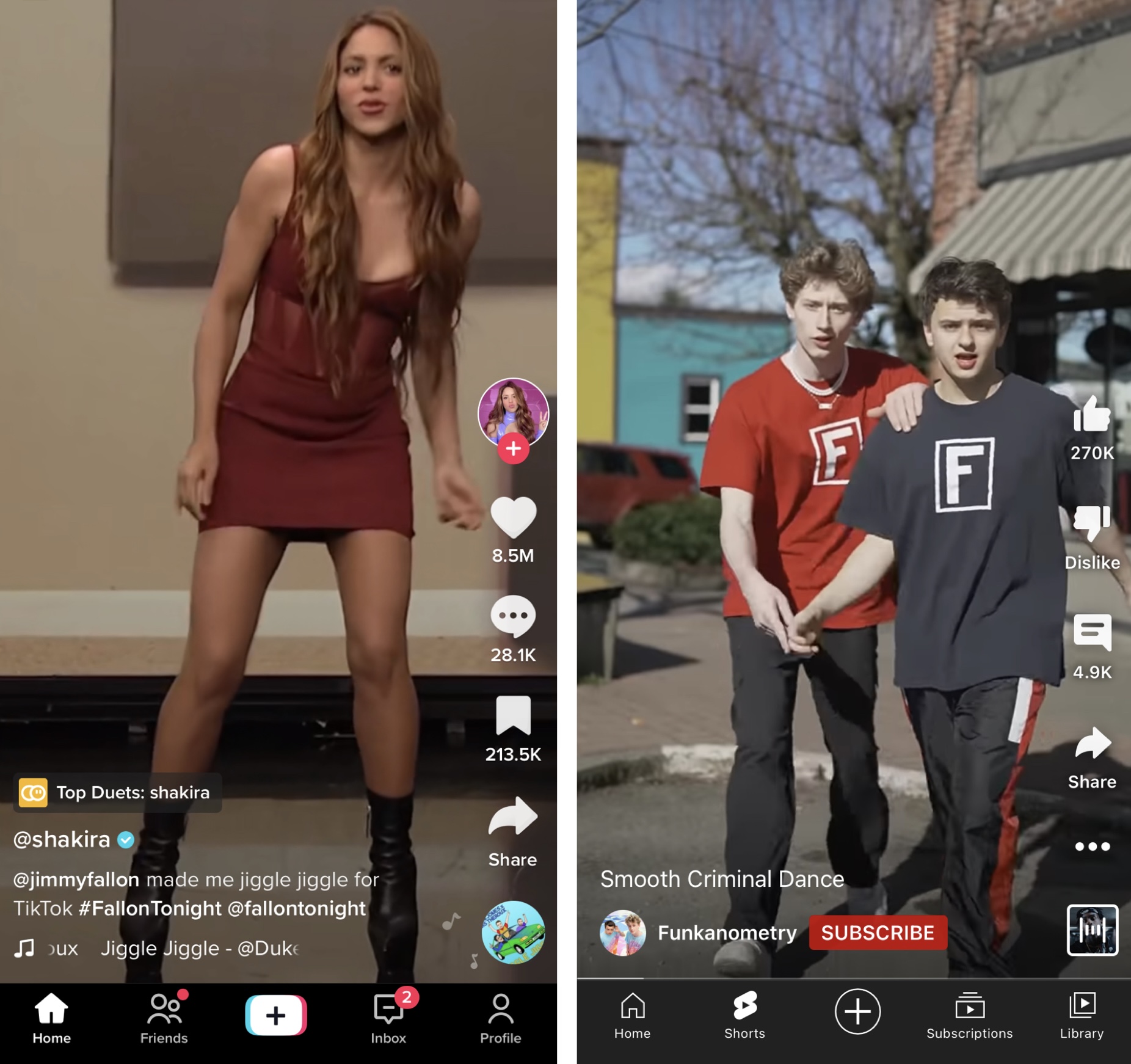Have you ever found yourself scrolling endlessly through short, snappy videos on platforms like YouTube and TikTok? Both have exploded in popularity, but are they really the same? In this blog post, we’ll take a closer look at the key features and differences between YouTube Shorts and TikTok. By delving into each platform's unique characteristics, we aim to answer the burning question: Are
Overview of YouTube Shorts

YouTube Shorts is the platform's response to the growing demand for quick, engaging video content, akin to TikTok. Launched in September 2020, Shorts allows creators to share short videos of up to 60 seconds in length, showcasing snippets of their creativity, humor, or skills. Here are some key features that define YouTube Shorts:
- Length: Videos can be made up to 60 seconds long. This gives creators enough time to convey a message or entertain without dragging it out.
- Editing Tools: YouTube provides several editing tools right within the app, like the option to speed up or slow down clips, add music from a vast library, and include various text overlays.
- Vertical Format: Shorts are optimized for vertical viewing, mimicking the format that has become popular for quick consumption across mobile devices.
- Discoverability: Shorts are prominently featured on the YouTube app, making it easy for users to stumble upon new content while scrolling.
- Integration with YouTube's Ecosystem: Creators can directly link their Shorts to their main YouTube channel, allowing them to possibly gain subscribers and monetize their content.
In comparison to traditional YouTube videos, Shorts aim to capture attention quickly and entertain the viewer in a condensed time frame. As part of YouTube’s broader strategy, Shorts targets a younger audience that favors bite-sized content while still maintaining the platform's reputation as a place for diverse and high-quality user-generated videos.
Also Read This: High-Speed Rumble Video Download Method No one Told You Before
Overview of TikTok
TikTok has taken the social media world by storm, captivating audiences globally with its engaging short-form video content. Launched in 2016 by the Chinese tech company ByteDance, it gained immense popularity, particularly among younger users. TikTok allows users to create, share, and discover 15 to 60-second videos that can be enhanced with various filters, music, and effects.
One of the platform's key features is its powerful algorithm, which personalizes the content feed based on user behavior. This means the more you interact with the app—by liking, sharing, or commenting—the more tailored your video recommendations become. This has made TikTok an addictive platform for many, as users can endlessly scroll through content that resonates with their interests.
Another standout aspect of TikTok is its robust community aspect. Users participate in trends, challenges, and hashtags, fostering a sense of belonging and creativity among its creators. It's not just about watching videos; it's about being part of a broader movement. In fact, some TikTok trends even spill over into mainstream culture.
Overall, TikTok is more than just an app; it's a cultural phenomenon that blends entertainment, social interaction, and creativity. Whether you're looking to showcase your dance moves, share cooking hacks, or go for comedic sketches, TikTok has a little something for everyone!
Also Read This: How to Add an Image in Canvas for Visual Enhancement
Key Differences between YouTube Shorts and TikTok
While both YouTube Shorts and TikTok are platforms for short-form video content, they cater to different user experiences and functionalities. Let’s dive into some of the key differences:
- Content Creation:
YouTube Shorts offers creators tools to edit videos similar to those on YouTube with more traditional features, like longer video capacities and a focus on storytelling. TikTok, on the other hand, thrives on quick edits and spontaneous creativity, often requiring less production effort.
- Audience Targeting:
TikTok generally attracts a younger audience, with users often ranging from teens to individuals in their mid-20s. YouTube Shorts, benefiting from YouTube's existing user base, can cater to a broader demographic, appealing to viewers of all ages.
- Algorithm and Discoverability:
The TikTok algorithm is famous for its ability to take unknown creators viral quickly. YouTube Shorts, while also providing discoverability, still relies heavily on its established subscription and search-based discovery mechanisms.
- Monetization:
YouTube Long-Form has well-established monetization models, and Shorts are beginning to incorporate these, allowing creators to earn money via ad revenue. TikTok has introduced features like the Creator Fund, but monetization options are generally viewed as more limited currently.
In summary, while YouTube Shorts and TikTok share similarities as platforms for short videos, their approaches to content creation, audience, algorithm, and monetization significantly differ, giving each platform its unique flavor!
Also Read This: Exploring the Different Uses of Adobe Stock
Similarities between YouTube Shorts and TikTok
When you dive into the world of short-form video content, the first two platforms that often pop into your mind are YouTube Shorts and TikTok. While they each have their unique twists, they share a range of similarities that make them popular among creators and viewers alike.
- Short Video Format: Both platforms primarily focus on short videos, generally ranging from 15 seconds to a maximum of 60 seconds. This concise format encourages quick and engaging content that holds viewers' attention.
- User-Friendly Features: With a simple interface, both YouTube Shorts and TikTok make it easy for users to create, edit, and upload their videos. They come equipped with features like filters, music overlays, and text options, making the video creation process accessible for everyone.
- Algorithm-Driven Discovery: YouTube Shorts and TikTok's discovery engines rely heavily on algorithms to present content to users. This means that even lesser-known creators can gain significant visibility if their content resonates with viewers.
- Viral Content Potential: Both platforms foster an environment where videos can go viral quickly. Engaging content, trending audio, or relatable themes can lead to a sudden spike in views and interactions.
- Community Engagement: Users can interact with content through likes, comments, and shares. Both platforms actively promote user engagement, fostering communities around specific niches or trends.
While YouTube Shorts and TikTok may differ in their ecosystems, these similarities certainly draw users to both platforms, creating shared cultures of creativity and interaction.
Also Read This: Freelancers’ Top Choice for Hassle-Free Projects – Imago Images
Impact on Content Creators
The rise of short-form video platforms like YouTube Shorts and TikTok has significantly reshaped the landscape for content creators. The implications are profound, offering both opportunities and challenges.
| Opportunity | Impact |
|---|---|
| Wider Reach | Creators can tap into massive audiences on both platforms, reaching users who prefer quick and impactful content. |
| Increased Engagement | Short videos often result in higher engagement rates, as viewers are more likely to consume multiple clips in one sitting. |
| Diverse Income Streams | From brand partnerships to sponsorships, creators have numerous avenues for monetization, especially with their growing popularity. |
| Creative Freedom | Short-form content allows creators to experiment with diverse styles and formats without the need for lengthy scripts or production. |
| Competition | With so many creators on both platforms, standing out can be challenging, requiring constant innovation and adaptation. |
In summary, while YouTube Shorts and TikTok provide incredible platforms for creativity, they also introduce a unique set of challenges that creators must navigate. Their success often hinges on a mix of authenticity, innovation, and engagement.
Are YouTube Shorts and TikTok the Same?
YouTube Shorts and TikTok are both powerful platforms for short-form video content, but they are not the same. Here's a detailed comparison of their features, functionalities, and user experience.
Key Differences
| Feature | YouTube Shorts | TikTok |
|---|---|---|
| Content Length | Up to 60 seconds | 15 seconds to 3 minutes (depending on user settings) |
| Monetization | Part of YouTube Partner Program; eligible creators can earn | Brand partnerships and sponsored content |
| Discoverability | Integrated into YouTube; users can find Shorts via dedicated tab | Algorithm-driven discovery through a For You page |
| Editing Tools | Limited editing features focused on music and text overlay | Extensive editing tools and effects |
User Experience
The user experience also differs significantly between the two platforms:
- YouTube Shorts benefitting from YouTube’s extensive library and user base.
- TikTok is known for its viral challenges, trends, and interactive community features.
While both platforms focus on short videos, they cater to different audiences and utilize unique algorithms for content distribution. Users may find that they prefer one over the other based on the content they wish to create or consume.
In conclusion, while YouTube Shorts and TikTok are both platforms for short-form video content and share some similarities, they differ fundamentally in their features, audience engagement, and monetization options, making them uniquely suited for different types of creators and consumers.
 admin
admin








